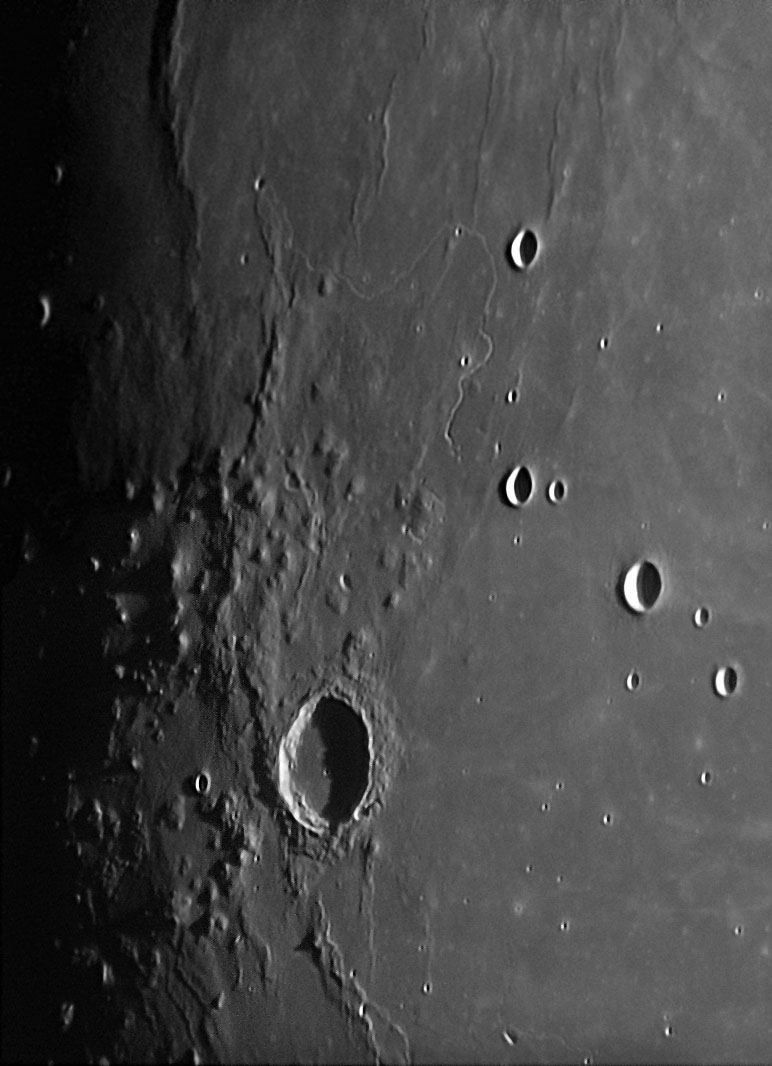
image by Jérôme Grenier, Paris, France.
The Marius Hills region has the greatest concentration of volcanoes on the Moon, and the morphology of the volcanoes is different from ones elsewhere. This image by Jérôme shows one thing about the Hills that is not normally recognized. The ridge visible on the top left of the image and the one curving at the bottom center, appears to continue through the eastern edge of the Marius Hills. This long mare ridge has been interpreted as the 1700 km diameter inner ring of the gigantic Procellarum Basin. Although the existence of that basin is problematic, it the mare ridge is an inner ring, it may have provided a deep seated conduit that allowed magma from depth to leak out onto the lunar surface, much as Lacus Veris erupted along the Rook Mountains ring of the Orientale Basin. If this magma contained more gases than common mare lavas it might account for the many steep-sided cones in the Marius Hills, which have been identified as being partly made of pyroclastics - this is the fancy word for magma that has been ripped to pieces by expanding gas bubbles. Pyroclastic materials can make steeper volcanic hills than fluid lavas that form the more gently sloped mare domes, such as the small pitted one near the end of the Marius Rille (top center). I would consider the unique Marius Hills as more circumstantial evidence for the existence of the Procellarum Basin.
Technical Details:
22 Nov. 2007. Orion Optics (UK) OMC 12″ + barlow 2x + Dmk31 AF03 + IR filter.
Related Links:
Rükl chart 29
Marius Hills from Orbit
Yesterday's LPOD: Two Ancient Moons
Tomorrow's LPOD: Lucky Lindy and Weird Ibn
COMMENTS?
Register, Log in, and join in the comments.



